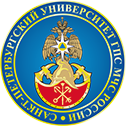Russian Federation
Russian Federation
UDC 614.842.4
Reducing the impact of fire hazards on people and property is achieved by using fire automation systems. The fire alarm system plays a special, system-forming role in the totality of these interacting systems. Modern views on the functionality implemented by these systems, designed to achieve or maintain a safe state of an object in relation to a specific dangerous event, allow it to be classified as a safety function. The authors comprehensively consider issues related to the causes of malfunction of such technical facilities, systematize disparate scientific research in the subject area, analyze new approaches to solving the problems of assessing and ensuring the reliability of these systems. Based on the information and logical model of the fire alarm system of an apartment building, a methodology is proposed for assessing functional safety and comparative assessments of various engineering solutions for fire alarm systems in terms of ensuring the required safety functions at various stages of the life cycle.
fire protection system, fire automation system, fire alarm system, apartment building, security function
1. Sokolov S.V., Kostyuchenko D.V. Effektivnost' sredstv pozharnoj avtomatiki na pozharah v zhilyh domah // Pozharovzryvobezopasnost'. 2014. T. 23. № 6. C. 70–75.
2. Issledovanie vremeni nachala evakuacii lyudej v zhilyh mnogoetazhnyh zdaniyah bez sistem opoveshcheniya o pozhare / D.A. Samoshin [i dr.] // Pozharovzryvobezopasnost'. 2022. T. 31. № 4. C. 38–55.
3. Poroshin A.A., Kondashov A.A., Sibirko V.I. Ocenka rabotosposobnosti sistem pozharnoj signalizacii na ob"ektah zhilogo fonda za period s 2016 po 2020 gg. // Tekhnologii tekhnosfernoj bezopasnosti. 2021. Vyp. 1 (91). S. 19–32.
4. Sokolov S.V., Kostyuchenko D.V. Upravlenie riskami gibeli lyudej pri pozharah v zhilyh domah gorodskih poselenij // Pozharovzryvobezopasnost'. 2017. T. 26. № 1. C. 61–74.
5. NFPA 921. Guide for Fire and Explosion Investigations». URL: https://www.nfpa.org/ (data obrashcheniya: 20.01.2025).
6. Smoke Alarms in US Home Fires: Supporting Tables, 2/202 – Quincy, MA: NFPA, 2021. 27 s. URL: https://www.nfpa.org/ (data obrashcheniya: 20.01.2025).
7. Kubica P., Wnęk W., Boroń S. Selected principles of developing fire scenarios // CNBOP-PIB. 2016. BiTP Vol. 42. Iss. 2. 2016. P. 173–178.
8. Osnovy teorii nadezhnosti: ucheb. / A.V. Chepurin [i dr.]. M.: Tipografiya PMG, 2023. 232 s.
9. Morozov O.I. Tekhnologicheskie metody povysheniya nadezhnosti sredstv tekhnologicheskogo osnashcheniya v mashinostroenii: ucheb. posobie. Ul'yanovsk: UlGTU, 2023. 171 s.
10. Fiorentini L., Cancelliere P. Fire Protection Systems functional safety requirements in performance-based design: proposed workflow and a simple case application // Journal of Physics: Conference Series. 2024. Vol. 2885. № 1. P. 012088.
11. Denisenko V.V. Komp'yuternoe upravlenie tekhnologicheskim processom, eksperimentom, oborudovaniem. M.: Goryachaya liniya-Telekom, 2014. 606 s.
12. Sineshchuk Yu.I., Sineshchuk M.Yu., Pantihovskij O.V. Informacionno-logicheskaya model' analiza i obespecheniya ustojchivosti funkcionirovaniya sistem upravleniya slozhnymi organizacionno-tekhnicheskimi ob"ektami // Problemy upravleniya riskami v tekhnosfere. 2012. № 2 (22). S. 6–12.






